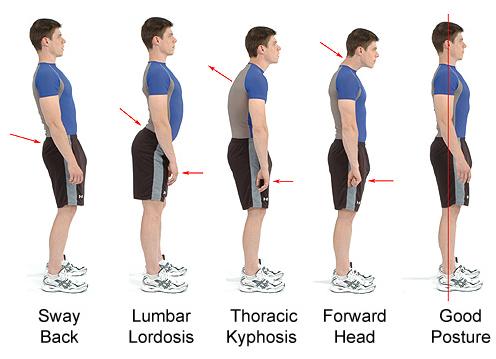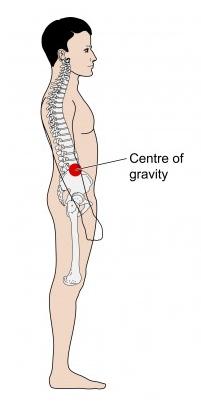In part 5 of this 6-part series, Brent Steepe, personal trainer of 23 years, encourages you to understand and embrace your body’s natural gifts to develop superior mechanical performance.
“I’ll never…” is the start of a self-fulfilling prophesy for failure. Whether you’re talking about lifting a heavy weight, finishing a race within a certain time, or throwing that amazingly well-placed 80 yard huck, athletes can be limited by their own negative beliefs. Our last installment covered mental fitness and preparation, and can be summed up nicely by Henry Ford’s quote: “Whether you think you can or you can’t, either way, you’re right.”
In the quest to play your personal best both safely and consistently, understanding your unique gifts as an athlete will help you reinforce positive mental habits. Learning how your body works from a mechanical perspective will also improve the quality of your movements, leading to increased performance on the field.The full spectrum of compound movements and principles of motion far exceed the space of this article, so we will focus on the particular functions of the human body that relate to ultimate.
Physics as they apply to the ultimate player
Many people claim to hate science, finding it boring, but your best ultimate game can be achieved through the laws of…wait for it…physics! Yes indeed, yawning through these concepts is discouraged for any enthusiast looking to sharpen their skill set and deliver consistently crisp performance on the field.
The Principle of Inertia: objects in motion tend to stay in motion, and objects at rest tend to stay at rest.
We’ve all heard of this, but have you ever thought about how this might apply to things on the field? Imagine running patterns, active marking, or even go as visceral as your internal circulatory system. You have experienced inertia on the field when, as you cut to keep pace covering your matchup, you find your body is inefficient at changing direction. Or perhaps you watched as your teammate maintained unenthusiastic marking patterns throughout long points or even the entire game? If you paid close enough attention, you may have realized that the amped-up 5th gear you found was difficult to regain after an extended rest. All of these are examples of different inertia states, applied to both internal and external systems. To begin to understand how to take advantage of them, we need to look at how the body is intended to be used.

Mechanical Posturing
Creating the most efficient outcome on the field involves understanding how to best position your body to perform, and that starts with posture. Of course, we all know what posture is and how it is supposed to look, right? But have you ever stopped to consider which muscles you are using to achieve it? Are those the right areas and fibers to activate for long-term wellness and performance?
As complicated and variable as it may seem, the human body is designed for maximum performance only when it is allowed to properly activate. To begin, let’s look at the standing position from both front and side views, including some common postural deviations:
It should be evident that the body rests on a platform of support, and that body management can be best explained by understanding the center of gravity, defined as the average location of the weight of an object. Because this can be influenced by the weight, volume, and body composition of your form, it is important to note that we are using center of gravity as a general concept.
It’s critical to understand how to control of your center of gravity in order to improve other athletic movements on the field. When you run and change directions, the body–and, more specifically, its center of gravity–has to be managed, creating a stable way to absorb the forces involved in changing direction due to inertia.
This is where you’ll really notice the difference in developmental levels. For a great illustration, see fellow SKYD Magazine contributor Ben Wiggins’ footwork video beginning at about the 6:30 mark, as visual progression through age, ability level, and mechanical ability specific to ultimate are discussed.

The joints are connectors, not activators
Often I hear athletes complain about problems in their knees, elbows, and hips. Unfortunately, I also hear trainers careless enough to say “do it until you feel it in your hips” or “move from the hips.” Feeling pain in a closed synovial capsule (a fancy term for a joint) is NEVER a good thing. It’s a sign that the surrounding muscular tension has exceeded its capacity to the degree that it has caused unreasonable stress and corresponding damage to that joint area. Whether or not the damage is permanent depends on a variety of factors, including intensity of signal and whether or not the system was prepared properly to receive that force.
The important thing to understand is that when you lock a joint, force is transferred through the bones to a much greater degree. It’s transferred through the areas where the bones connect, called ligaments, which were designed for stabilization, not extreme load management. There is a simple solution for a lifetime of joint protection. Simply put, never let your joints sustain a locked position. A common example is the knee. Did you realize that it takes no more than 12 lbs of force in a medial or lateral direction on a locked knee to disrupt the cavity, which could potentially disable you? This is one physics experiment I encourage you to stay away from.
Whether a lever is long or short, the force required is different yet the work done remains the same.
Ever wonder why some people put on bulk muscle very quickly, while others tend to get lean? Why short and stocky people can achieve massive strength, while tall and lanky people can create high top-end speed or launch a backhand like no other? Physics strikes again. Next time you are comparing body types, take a look at the length of the levers in question, and remember these simple rules:
- Shorter levers and short lever systems generate more explosive power when considering equal contractive force. The reset cycle is also quicker in shorter lever systems. Considering the science behind it, there will always be anomalies, like the 6’5” super-sprinter Usain Bolt–generally, though, science supports the advantage of shorter limbs when sprinting.
- The longer the lever when running, the fewer cycles necessary to cover identical distance compared to a shorter lever. That means endurance activities like extended running favor longer limbs, with a diminishing return as the length of the lever gives way to the weight it must carry. If the distance is short enough, the experienced sprinter with the faster leg turnover will have the advantage. The only way the longer lever has a chance is if the length of the runner’s stride can make up the difference over the entire distance.
- The smoother the translation from lever to joint to lever, the more effortless and fluid the motion.
- Regardless of the length of a lever and the force provided to move it, the net work done remains the same.
Now, when taking the field, you will have a better understanding of how to maximize your ultimate game. Short limbs? Quick power and acceleration moves will drive your success on the field. Long strides? Make like a gazelle for the end zone, and be sure your thrower understands and appreciates your stride. Cutting? Keep in mind your center of gravity so you don’t topple while trying to out-juke your defender. Know and control your center of gravity, know the strengths and weaknesses of your levers, and use that knowledge to take your game to the next level!










Comments Policy: At Skyd, we value all legitimate contributions to the discussion of ultimate. However, please ensure your input is respectful. Hateful, slanderous, or disrespectful comments will be deleted. For grammatical, factual, and typographic errors, instead of leaving a comment, please e-mail our editors directly at editors [at] skydmagazine.com.